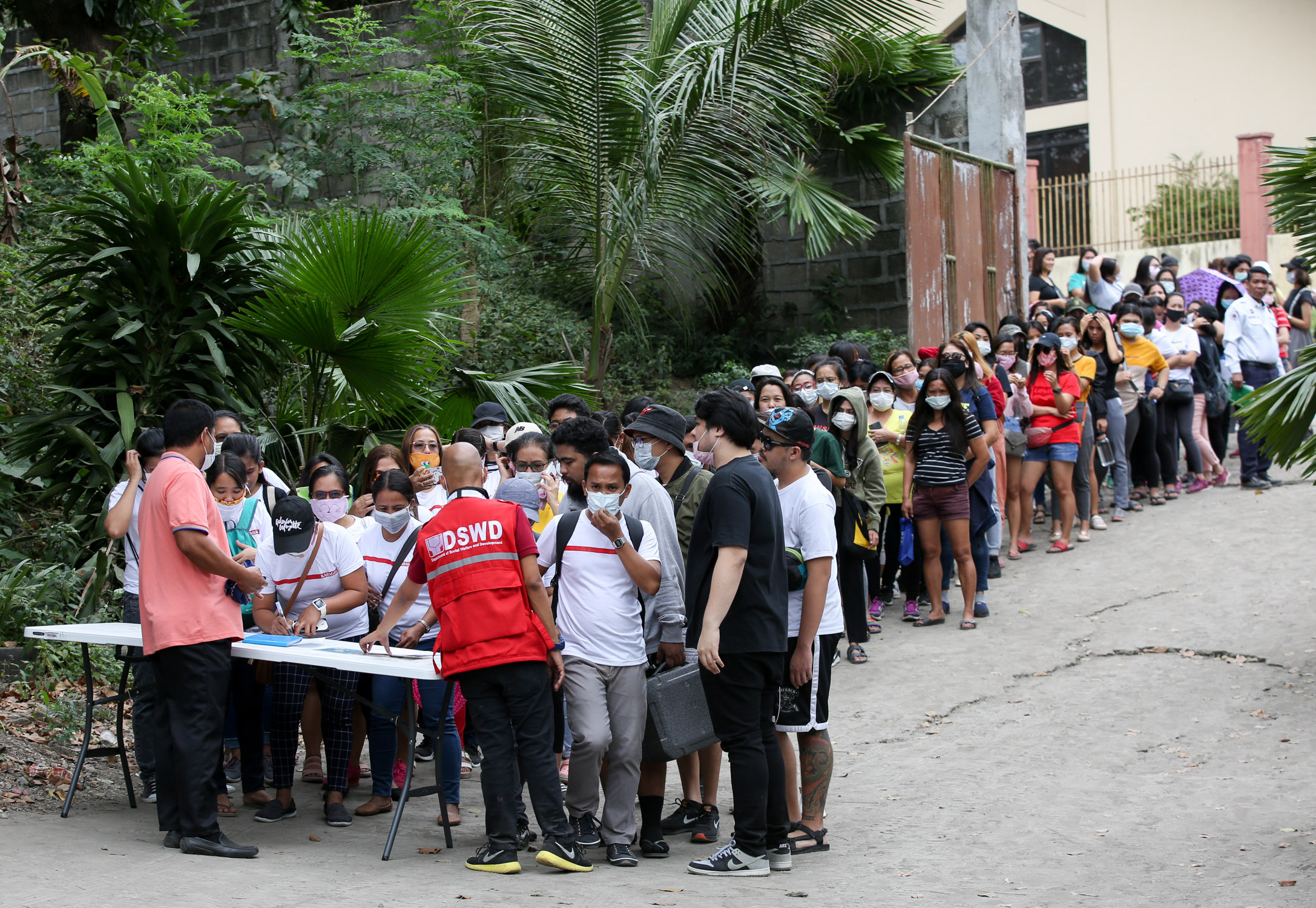‘Bayanihan’ eruption: Unaffected cities, towns welcome evacuees

ARMY OF HELPERS Volunteers from Cavite and Laguna provinces sign up at a field office of the Department of Social Welfare and Development in Barangay Gregoria de Jesus, General Mariano Alvarez, Cavite, to help pack relief goods for Taal evacuees. —LYN RILLON
SANTO TOMAS CITY, Batangas, Philippines — Towns in Batangas province, including the poorest ones, that are unaffected by the eruption of Taal Volcano have opened their doors to thousands of evacuees.
The towns as well as cities, mostly on the western coast of Batangas, willingly offered shelter and provisions, like food and clothing.
“We were just lucky. If the wind had blown further south, it would have been us (affected),” said Alex Pimentel, chief of the Disaster Risk Reduction and Management Office (DRRMO) of Nasugbu town.
Ash blanketed 11 towns and cities along the Taal lakeside in the western section of Batangas, forcing more than 25,000 people to flee, according to the provincial DRRMO.
Scattered families
Nasugbu currently cares for 2,311 evacuees from the towns of Talisay, Laurel, Agoncillo, San Nicolas, Lemery and Taal — all within the 14-kilometer danger zone.
Article continues after this advertisementNasugbu Mayor Antonio Barcelon, in a phone interview, said the town was willing to spend its P22-million disaster fund for the needs of the evacuees.
Article continues after this advertisement“I’ve said, ‘Let’s use all that (amount) since we have more than enough from all the help (from nongovernmental groups and national agencies) pouring in,” Barcelon said.
Aside from Nasugbu, the towns of Lian, Tuy, Balayan, Calaca and Calatagan have “adopted” evacuees who are now staying in schools and gymnasiums, even if this means disrupting classes.
Spared from disaster
Evacuation centers were also opened in Lipa City and the province’s capital of Batangas City, as disaster responders sought to bring people out of the danger zone as far as possible in case of another major eruption.
“We were spared from this and from all the major past calamities. So this was also a way of giving thanks and giving back,” said Barcelon, who believed that the affected towns would have done the same for Nasugbu.
Calatagan, a second class municipality, sent eight trucks to ferry people out of Agoncillo, while Nasugbu was among the first to respond hours after Sunday’s eruption by deploying two passenger buses to get people out of Talisay town.
The adjacent cities of Santo Tomas and Tanauan in Batangas quickly opened evacuation centers when they realized the ashfall did not affect them as much as it did the other areas.
The Inquirer on Sunday evening met on the road Jaworski, a factory worker in Cavite province, who rushed back, even paying a van double his normal fare, so he could get to his wife and two children, who were evacuated from Talisay.
Contingency plan
Hitching a ride on rescue and media vehicles, Jaworski visited several evacuation centers here before he found his wife and children in Barangay Poblacion 3.
His family was safe.
Pimentel said the province had a contingency plan for all DRRMOs in case of an eruption, only they did not anticipate a disaster this big and chaotic.
“Nasugbu was supposedly assigned to Talisay. But when we got there, Santo Tomas (city rescue teams) were already there. So we told people: ‘Those who wished to go to Santo Tomas, stay on the left. To Nasugbu, go to the right,’” he said.
“Then I told the parish priest (in Talisay): ‘Father, don’t worry, we will take care of your people,’” he added.
Special relationship
Entire populations of towns, like Talisay and Agoncillo, have been evacuated.
In most evacuation centers, people have enough clothing from donations but they said they needed more food and water.
In Santo Tomas, about 5,000 Talisay residents were housed in nine evacuation centers. Private and nongovernmental groups on Tuesday began helping out by setting up soup kitchens in a church in Lipa City or mounting relief operations.
“We’re doing this in the spirit of bayanihan,” said Santo Tomas information officer Gerry Laresma.
Residents of Agoncillo were mostly the ones scattered to different locations. Members of some families were separated in the ensuing chaos following the eruption.
Some Agoncillo residents were brought to Calaca town, while others to the adjoining province of Cavite.
Cavite Gov. Jonvic Remulla said the province was willing to provide for about 5,000 families staying in evacuation centers in Tagaytay City, Alfonso and Mendez.
“Others went to their relatives here, like 20 people who are staying in one house,” Remulla said.
The Cavite towns contiguous to Batangas also experienced heavy ashfall but accommodated evacuees, who “went up (Cavite) on their own,” Remulla said.
“We have a sort of special relationship with Batangas and we are willing to accommodate them,” he said.